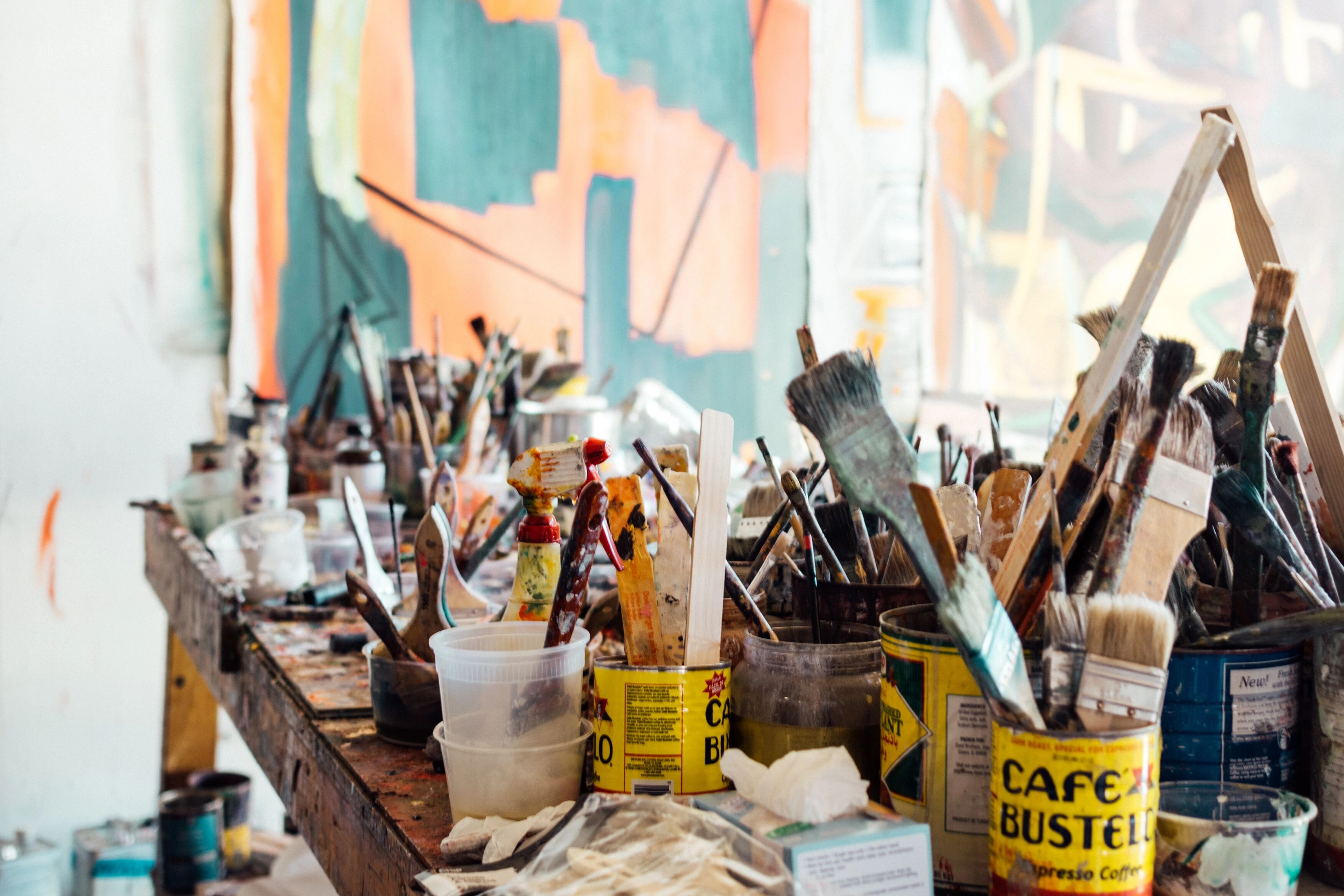
Underpainting: Foundation, Form, and Luminosity in Art – A Curator's Guide
Explore underpainting as a foundational art technique. This authoritative guide details its historical evolution, diverse methods (grisaille, verdaccio), critical material considerations, and systematic application to achieve profound depth, precise tonal values, and vibrant luminosity in artistic creations. Essential for artists and art enthusiasts.
Underpainting: A Curator's Guide to Foundation, Form, and Luminosity in Art
Underpainting is not merely a preliminary stage; it is the strategic cornerstone upon which masterful paintings are built. As curators and educators, we observe its profound impact on the structural integrity, luminous quality, and enduring presence of artworks across centuries. Far from being a mere preliminary sketch, underpainting serves as a critical preparatory layer that systematically establishes the foundational structure, accurate tonal values, and inherent atmospheric qualities of a composition prior to the application of final colors. A robust underpainting provides the crucial scaffolding and longevity necessary for the successful development of subsequent layers, a principle integral to a comprehensive art education.
The Enduring Purpose of Underpainting: Establishing a Coherent Framework
Underpainting fulfills several invaluable functions, each contributing significantly to the structural integrity and visual harmony of the finished artwork.
Planning Composition and Space
Before proceeding to intricate details or a full spectrum of colors, underpainting enables the meticulous planning of a composition. It assists in establishing focal points, orchestrating the arrangement of elements, and defining spatial relationships within the canvas. The laying down of tonal areas can reveal perceived depth or flatness, allowing artists to visualize how elements recede or advance. Any adjustments required for balance, narrative flow, or atmospheric perspective are considerably more manageable at this stage than during the application of final pigments, preventing costly compositional rework later. This strategic planning ensures a robust underlying structure.
Defining Value and Form
A primary function of underpainting is the precise definition of values—the inherent lightness or darkness across the tonal spectrum—and the coherent establishment of form within a composition. By utilizing a monochromatic or restricted palette, artists can concentrate exclusively on the interplay of light and shadow, thereby articulating the three-dimensional characteristics of subjects unburdened by chromatic complexities. This initial tonal mapping facilitates the early resolution of structural challenges, ensuring that forms acquire solidity and verisimilitude (lifelikeness). A cool grisaille, for instance, can render a form with ethereal recession, while a warm umber underpainting might lend it a grounded, solid presence. The clarity achieved at this juncture directly enhances the chromatic vibrancy and stability of subsequent layers. This preparatory stage is also highly instrumental in establishing balance in art composition from the very inception of a work, as the distribution of tonal masses inherently influences visual weight.
Harmonizing Color Temperature and Palette
While primarily addressing value, underpainting can also subtly influence the overall color temperature of a painting. For instance, a warm-toned underpainting, such as an earth red (like Burnt Sienna), can imbue cool colors applied over it with a surprising, luminous resonance, creating optical warmth. Conversely, a cool underpainting, like a verdaccio green, can subtly mute or deepen warm hues, fostering unexpected chromatic harmonies and adding complexity. A muted violet underpainting, for example, could subtly temper vibrant yellows or oranges in the final layers, creating sophisticated juxtapositions. This strategic application of an initial color bias acts as a unifying agent, bringing all subsequent colors into a cohesive palette and contributing to a harmonious emotional atmosphere. It meticulously showcases how artists use color strategically from the preliminary stages.
Building Transparency and Luminosity
For mediums such as oil paint, frequently applied in thin, transparent layers (glazes), underpainting is indispensable. It establishes a luminous base over which transparent colors can be progressively built, cultivating a jewel-like depth and richness that is challenging to achieve with opaque applications alone. This technique promotes optical mixing, where successive layers of color blend perceptually in the observer's eye rather than through physical mixing on the palette. Imagine layers of sheer, colored fabric laid one over another; light passes through them, interacting with each hue, and the resulting perceived color is a richer, more complex blend. Light penetrates these transparent layers, reflects off the underlying underpainting, and filters back, resulting in a unique internal glow and a profound sense of layered history. This process is closely related to mastering glazing techniques in oil painting.
Contributing to Archival Longevity
From a preservationist's perspective, underpainting is critical. A diligently executed underpainting significantly contributes to the structural integrity and archival longevity of a painting. By ensuring initial layers dry thoroughly and strictly adhering to principles such as "fat over lean" (where subsequent oil layers must contain a higher oil-to-pigment ratio to remain flexible over a drier, leaner base), artists establish a stable foundation. This minimizes the risk of cracking, delamination, or other forms of deterioration over prolonged periods, safeguarding the artwork's preservation for future generations.
A Brief History of Underpainting: Traditional Practices and Modern Adaptations
The practice of underpainting possesses a rich historical lineage, extending back centuries and notably employed by the Old Masters, whose meticulous methodologies continue to inform contemporary painting practices. Artists throughout history, whose journeys can be traced on an artist's timeline, have adapted these principles.

https://www.flickr.com/photos/fabola/41351098495/, https://creativecommons.org/licenses/by-sa/2.0/
Renaissance Innovations
Renaissance artists, including luminaries such as Jan van Eyck and Titian, meticulously constructed their paintings through successive layers. Their dedication to underpainting often stemmed from a desire for maximum control over light, form, and the illusion of reality, often for profound spiritual or narrative purposes. They typically commenced with an intricate drawing, followed by a detailed underpainting to establish the complete tonal range. Two prominent techniques became widely adopted:
- Grisaille: A monochromatic underpainting, characteristically executed in shades of grey or brown. Its primary objective is to precisely define form and value, thereby creating a powerful sense of solidity and light prior to the introduction of color. Further exploration of this technique is available in what is grisaille: understanding the monochromatic painting technique.
- Verdaccio: Originating in the Italian Renaissance, this technique employed a greenish-grey tone, proving particularly effective for developing flesh tones in portraiture. The cool green provided a natural chromatic counterpoint to the warm pinks and reds subsequently glazed over it, yielding remarkably lifelike skin tones. The optical effect of the underlying green enhancing the warm overlying hues exemplifies the sophistication of these early methods.
These methods facilitated an extraordinary degree of control and detail, enabling artists to create the luminous and richly detailed works admired today. While ancient techniques like encaustic painting, involving pigmented wax, utilized unique layering processes, early artists across diverse cultures universally comprehended the efficacy of building images through successive applications. For more on ancient layering, refer to the history of encaustic painting: ancient wax art to modern revival.
Modern Adaptations
While traditional methods like grisaille persist in contemporary practice, artists frequently adapt underpainting to suit individual styles and chosen mediums. Abstract painters, for example, may employ a vibrant, contrasting underpainting to generate visual tension and luminosity when warmer or cooler colors are applied in subsequent layers. This subtle interplay of hidden layers can impart immense depth. For instance, an artist might use a shockingly bright, almost neon orange underpainting, and then glaze over it with deep, moody blues and purples, creating an internal glow that is both surprising and deeply resonant. This principle is further explored in the unseen layers: my process of building depth and narrative in abstract mixed media. Even within digital art, the conceptual framework of blocking in foundational values and forms before detailing with color mirrors traditional underpainting practices, affording similar advantages in compositional and tonal control, often within layers that can be toggled on and off.
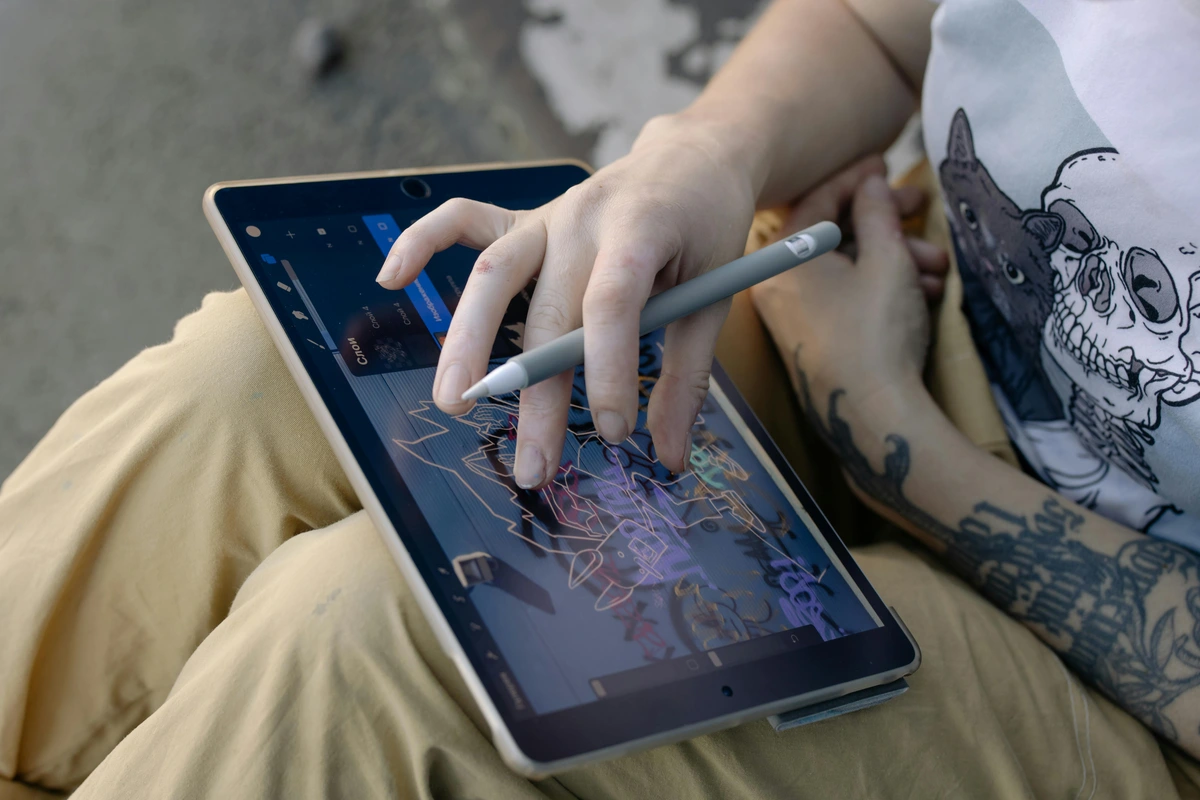
https://images.pexels.com/photos/7117274/pexels-photo-7117274.jpeg, https://creativecommons.org/public-domain/
Common Underpainting Techniques and Approaches
Artists employ a diverse repertoire of underpainting techniques, each offering distinct advantages contingent upon the desired aesthetic outcome of the artwork. The choice of technique is a strategic decision that profoundly influences the final work.
1. Grisaille
Grisaille is a monochromatic underpainting executed entirely in shades of gray, black, and white. Its primary focus is the precise establishment of accurate values and the sculptural definition of form through light and shadow. This provides an unambiguous tonal map for subsequent color layers and ensures structural coherence. Grisaille is ideal for realistic or highly detailed subjects, portraiture, figure painting, or any work where precise tonal rendering is critical for foundational integrity. It is commonly executed in thinned oils, acrylics, or tempera. An artist might choose grisaille when a strong emphasis on light and shadow is paramount, ensuring the underlying structure of the subject is unyielding.
2. Verdaccio
Originating in the Italian Renaissance, Verdaccio is a monochromatic underpainting utilizing a greenish-grey or earthy green pigment. Historically employed for flesh tones, the cool green provides a natural chromatic counterpoint to warm glazes, imparting a remarkably lifelike luminosity and vibrancy to the skin. While predominantly used for portraiture and figure painting, contemporary artists may adapt this cool green base in abstract works to generate striking optical effects with overlying warm layers. Traditionally oil, acrylics can be adapted for modern applications. Verdaccio is a strategic choice for artists seeking to imbue skin tones with a subtle cool undertone that makes warm glazes appear to sing, coaxing a unique vitality from the canvas.
3. Imprimatura & Toning
An imprimatura or toning involves applying a thin, transparent wash of a single color uniformly across the entire canvas or specific regions. This technique eliminates the stark white of the canvas, unifies the painting surface, and establishes an initial overall mood or chromatic stage for the artwork. It effectively mitigates the daunting effect of a blank white canvas, providing a cohesive ground for subsequent artistic responses. Suitable for any painting requiring a consistent base tone or immediate color harmony, it is often executed with highly thinned oils, acrylics, or watercolor washes. Popular choices include Burnt Sienna, Raw Umber, or Yellow Ochre, which set the initial color temperature and provide a luminous, unifying ground upon which to build. Artists often use imprimatura to instantly remove the intimidation of a blank canvas and establish a foundational emotional context.
4. Bistre & Sepia
Underpaintings executed in warm brown (bistre) or sepia tones utilize these rich, earthy hues for establishing warm tonal values or for creating old master-style drawings. They naturally evoke a sense of historical depth or provide an inherent warmth to the composition, making them best suited for subjects requiring an antique aesthetic or as a warm, grounding base for landscapes and still lifes. Traditionally ink or watercolor, these tones are now also readily employed with acrylics and oils, imparting a grounded, historical, or natural warmth that influences the overarching emotional resonance. These tones are excellent for works where a deep, earthy foundation is desired, influencing the entire emotional palette from the outset.
Underpainting for Mood and Emotional Resonance
Beyond structural and chromatic considerations, underpainting can profoundly influence the emotional and psychological impact of a painting. The initial choice of a monochromatic palette or a unifying color wash can set a deeply ingrained mood that resonates through subsequent layers. For example, a cool, misty underpainting in pale blues or muted greys can evoke the quiet solitude of a pre-dawn landscape, or the introspective calm of a rainy afternoon, even if the final colors are vibrant. Conversely, a warm, energetic underpainting in reds or yellows can infuse the entire work with a feeling of passion, joy, or dynamism. This foundational emotional bias subtly guides the viewer's interpretation, demonstrating how deliberate choices in the early stages of a painting directly contribute to its expressive power and connect with the contemporary exploration of abstract emotional landscapes.
Underpainting for Texture and Optical Effects
Beyond its role in defining value and color, underpainting can introduce sophisticated texture and complex optical effects. Artists frequently incorporate impasto (the thick application of paint) in underlayers or integrate textural elements such as sand or gel medium to create tactile surfaces. When subsequent, thinner layers of color are applied over these textured underpaintings, the raised areas (peaks) and depressions (valleys) interact with light in intriguing ways. This interaction can lead to diverse surface qualities; for instance, a finely textured underpainting might create a shimmering luminosity when glazed, while a coarser texture could result in a more velvety or earthy appearance. This method allows for the strategic building of complexity, leading to visually rich and engaging surfaces that reflect light dynamically.
Similarly, transparent glazes constructed upon an underpainting generate optical mixing, a phenomenon where colors from different layers blend perceptually in the viewer's eye rather than through physical mixing on the palette. Light penetrates through successive transparent layers and reflects off the underlying surfaces, creating a unique internal glow and dynamic chromatic interplay. This enhances luminosity and depth, giving the impression of colors emanating from within the painting rather than simply resting on its surface.
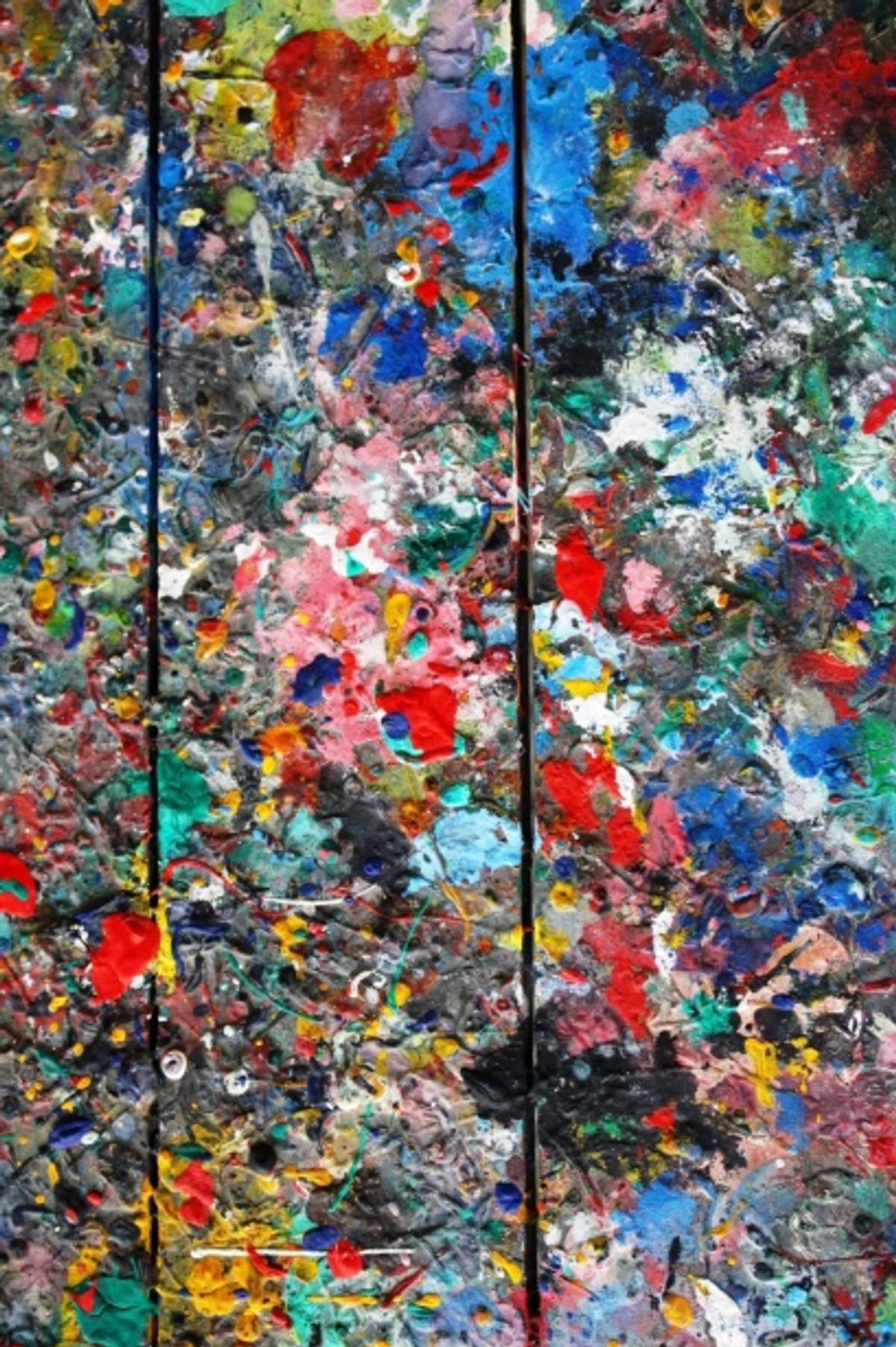
https://www.publicdomainpictures.net/pictures/250000/nahled/messy-colorful-artists-palette.jpg
Surface Preparation and Medium Selection for Underpainting
When embarking on an underpainting, the choice of medium and the meticulous preparation of the surface are not trivial decisions; they are foundational to the success and archival integrity of the entire work. Consider these selections as the initial architectural plans for your painting, as they directly influence drying time, layering capabilities, and compatibility with final layers. A thorough understanding of these aspects, further elucidated in a definitive guide to paint types for artists, is critical for successful and archival layering.
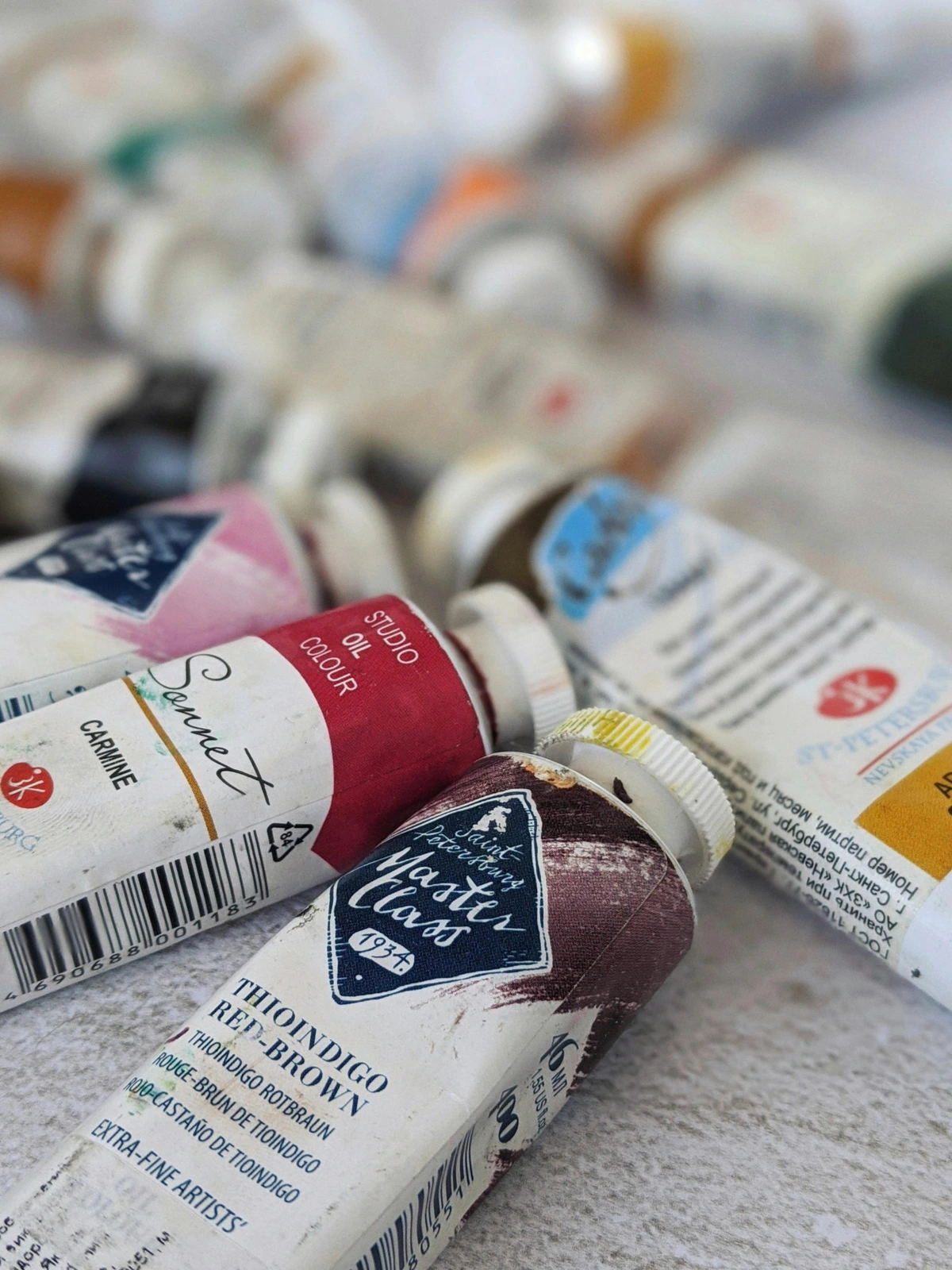
https://images.pexels.com/photos/4139739/pexels-photo-4139739.jpeg
Medium | Characteristics for Underpainting | Considerations | Application Guidance |
|---|---|---|---|
| Oil | Slow drying properties facilitate extensive blending and nuanced value shifts, making it highly compatible with subsequent oil glazes. | Strict adherence to the "fat over lean" principle is imperative (subsequent layers must contain a higher oil-to-pigment ratio) to mitigate cracking. This ensures the more flexible layers are on top of the drier, more brittle layers. Requires substantial drying intervals between layers. | Oils are optimally suited for rich, profound underpaintings. The extended drying time permits meticulous refinement of tonal values. Conscientious application of the "fat over lean" principle and adequate drying periods are fundamental for archival quality and the enduring vibrancy of color. |
| Acrylic | Rapid drying, high versatility, amenable to thinning with water for transparent washes or employed opaquely. Excellent for rapid blocking-in or opaque foundational layers. | Dries permanently, rendering extensive blending challenging once dry. Generally considered a stable underpainting for oil, provided an appropriate isolation layer (such as a matte medium) is applied between oil and acrylic to prevent solvent penetration and ensure long-term adhesion. | Acrylics offer significant efficiency for swift blocking-in or initial tonal mapping due to their accelerated drying time. While requiring decisive application, their permanence ensures a stable, non-reactive substratum for subsequent layers, including oils if properly isolated. |
| Ink | Extremely rapid drying, yields sharp lines and assertive washes. Ideal for initial linear drawing and bold value contrasts. | Marked by extreme permanence and minimal amenability to correction once dry. Not suitable for applications requiring heavy texture or extensive blending, primarily used for linear and initial tonal studies. | Ink is capable of creating distinct, graphic underdrawings where stark contrasts are desired to subtly interact with later layers. Its immediacy and precise definition render it suitable for linear and direct tonal studies, often as an initial drawing layer. |
| Watercolor | Transparent qualities, fast drying. Optimal for light washes and subtle tonal planning, particularly on absorbent substrates like paper. | Requires an absorbent surface for optimal adherence. Generally not recommended as an underpainting for oil or heavy acrylics on canvas due to potential adhesion inconsistencies or structural instability. | While highly effective for paper-based studies, watercolor's compatibility with canvas and subsequent oil/acrylic layers is limited. It can be judiciously employed for very light toning; however, caution is advised to ensure proper adhesion and structural integrity for the final artwork, particularly when heavy mediums are to follow. |
Surface Selection
Beyond the chosen medium, the selection of the painting surface (e.g., canvas, wood panel, paper) significantly impacts the efficacy of underpainting. A properly primed surface, typically prepared with gesso, is essential. Gesso establishes a uniform, absorbent ground that facilitates optimal paint adhesion and prevents the deterioration of the support. Different types of gesso, such as traditional acrylic gesso or oil-based primers, offer varied absorption rates and textures. Acrylic gesso is versatile and fast-drying, while oil primers provide a smoother, less absorbent surface often preferred for the luminosity they impart to oil paints. The inherent texture of the gessoed surface (e.g., smooth or rough) will also influence the application characteristics of the underpainting and the subsequent interaction of overlying layers, thereby affecting the overall tactile quality of the finished artwork. A curator often notes how the initial surface texture subtly informs the artist's mark-making and the ultimate expressive character of the piece.
Step-by-Step: Integrating Underpainting into the Artistic Process
Integrating underpainting systematically into the artistic process can profoundly enhance the final outcome. The following structured approach outlines key phases, designed to guide artists toward a robust foundation.
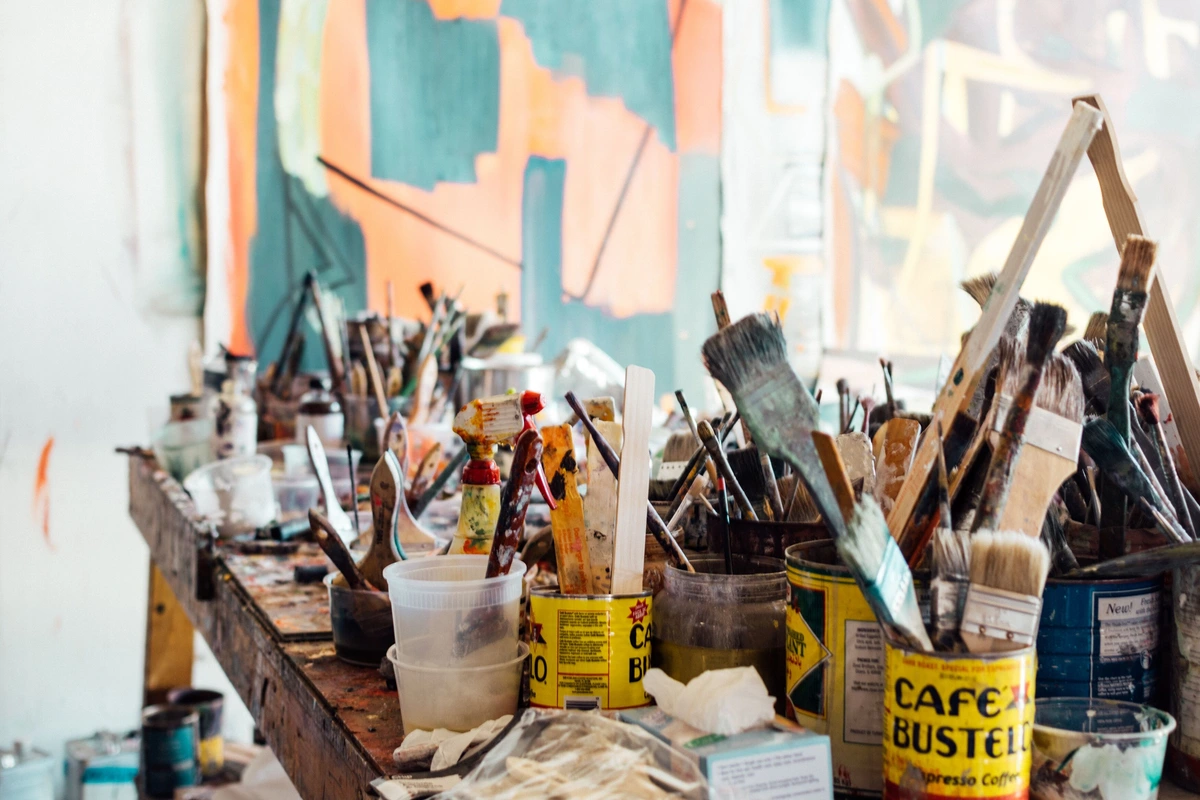
- Preparation: Commence with a meticulously primed canvas or panel. A well-prepared surface is non-negotiable for effective paint adhesion and the long-term preservation of the artwork, setting the stage for all subsequent creative endeavors.
- Drawing: Lightly sketch the compositional elements. This foundational drawing can be executed with erasable charcoal or thinned paint, providing a sufficient guide to map out main forms and ensure proportional accuracy. It is advisable to be bold but not overly detailed at this stage, embracing the initial marks as part of the painting's history.
- Imprimatura (Optional): Apply a thin, transparent wash of a neutral or warm color across the entire surface. This serves to eliminate the stark white of the canvas, establish a general tonal foundation, and set the initial atmospheric mood for the painting. It offers a unifying optical effect from the outset.
- Define Values (Underpainting): Utilizing a selected monochromatic or limited palette (e.g., grisaille or verdaccio), block in the major shapes and precisely define the lightest lights, darkest darks, and mid-tones. The focus at this stage is intently on form and tonal relationships, rather than intricate detail. Apply paint thinly to facilitate efficient drying.
- Refine Forms: Once the initial layer is dry, a second, slightly more detailed pass can be added to refine shapes and subtle value transitions, allowing the underlying forms to fully emerge from the canvas. This stage adds nuance and dimensionality, preparing the surface for color.
- Dry Thoroughly: This stage is paramount for archival integrity. Ensure the underpainting is completely dry before proceeding to color layers. For oil mediums, this may necessitate drying periods of days or even weeks, contingent upon paint thickness and environmental conditions. Expediting this step risks compromising the clarity of subsequent layers and the painting's long-term stability.
- Apply Color: With a robust foundation of values and composition established, transparent glazes or opaque color layers can be confidently applied. The meticulously executed underpainting will then imbue the final work with exquisite depth, structural coherence, and luminosity.
Underpainting for Different Subject Matters
The approach to underpainting can be adapted significantly based on the subject matter, allowing artists to leverage its foundational strengths most effectively.
- Portraits and Figures: Grisaille and Verdaccio are traditionally favored for their ability to meticulously define anatomical form and create lifelike flesh tones. The emphasis is on sculptural accuracy and subtle value shifts to capture the nuances of human expression.
- Landscapes: Tonal underpaintings in earth tones (like Bistre or Sepia) are often used to establish atmospheric perspective, grounding the composition, and defining the interplay of light and shadow across terrain. An imprimatura can set the overall mood of the scene—a warm earth tone for a sunny day, or a cool grey for a misty morning.
- Still Lifes: Underpainting is crucial for defining the precise forms and textures of objects, as well as their relationship to light. Grisaille provides an excellent base for rendering reflective surfaces and intricate details, while a subtle imprimatura can unify the objects within their setting.
- Abstract Art: Here, underpainting can be exceptionally experimental. Artists might use contrasting colors or unexpected textures in their underlayers to create visual tension, a sense of hidden depth, or vibrant optical effects when subsequent layers are applied. It becomes a dialogue between concealment and revelation, adding an intellectual layer to the visual experience.
Troubleshooting and Best Practices in Underpainting
Challenges during the underpainting stage can be effectively addressed with an awareness of common pitfalls and adherence to established best practices, enhancing artistic outcomes and contributing to the longevity of the artwork.
Common Challenges and Solutions
- Overworking the Underpainting: It is essential to resist the temptation to over-detail at this stage. Underpainting establishes the core values and forms; excessive refinement can limit the spontaneity and expressive freedom in subsequent color applications. Solution: Maintain a focused approach on broad values and forms; reserve intricate detailing for later stages.
- Applying Underpainting Too Thickly: Thick underpainting layers significantly prolong drying times and can introduce structural vulnerabilities (e.g., cracking) if subsequent layers are thinner or applied prematurely. For oil mediums, this violates the fundamental "fat over lean" principle. Solution: Apply underpainting layers thinly and uniformly, ensuring ample drying time between successive applications.
- Chromatic Instability in Final Layers: This often results from an underpainting that is not fully dry or from the use of incompatible mediums without proper isolation. Solution: Ensure complete dryness of the underpainting. For oil mediums, adhere strictly to the "fat over lean" principle, and consider an isolation layer when applying oils over acrylic underpainting to prevent issues.
- Adhesion Compromises: If the underpainting fails to adhere properly to the primed surface, or if incompatible mediums are layered without appropriate preparation, subsequent layers may delaminate. Solution: Always work on a properly primed surface that is fully compatible with the chosen mediums. Test novel medium combinations on a disposable substrate before applying them to the primary artwork.
- Underpainting Conflicting with Top Layers: An underpainting executed with strong, contrasting colors or values that prove difficult to cover or harmonize can impede the effectiveness of subsequent layers. Solution: Carefully plan the underpainting's color and value range, considering its intended interaction with the final palette. A more neutral or complementary underpainting often provides greater flexibility for chromatic development.
Best Practices for Underpainting
- Strategic Planning: Envision the completed artwork, encompassing its full tonal range and intended color temperature, prior to commencing the underpainting. This foresight informs judicious material and technique selections.
- Limited Palette: Employing a monochromatic or restricted color palette for the underpainting simplifies the focus on values and forms, thereby minimizing distractions during this critical structural phase.
- Thin Layer Application: Regardless of the chosen medium, thinner underpainting layers promote more efficient drying and establish a stable, translucent base, which is ideal for subsequent applications.
- Patience in Drying: Particularly with oil mediums, allocate sufficient time for each underpainting layer to dry thoroughly. This preventative measure mitigates future issues and significantly contributes to the longevity and luminosity of the finished artwork. This disciplined approach is a hallmark of enduring artistic practice.
- Systematic Experimentation: Diverse subjects and artistic visions benefit from varied underpainting approaches. Methodical experimentation, perhaps through observing works in institutions like a local museum, is encouraged to identify techniques best suited to individual artistic styles and objectives. These principles are fundamental for building a body of work, some of which may eventually be available for purchase by collectors.
Underpainting, when approached with careful planning and systematic execution, transforms the blank canvas into a dynamic and robust foundation. It offers artists unparalleled control over the depth, tonal relationships, luminosity, and emotional resonance of their final works, affirming its role as an indispensable technique in artistic mastery. The disciplined application of these foundational methods ensures that each work achieves its fullest potential, carrying its inherent beauty and structural integrity into the future.




